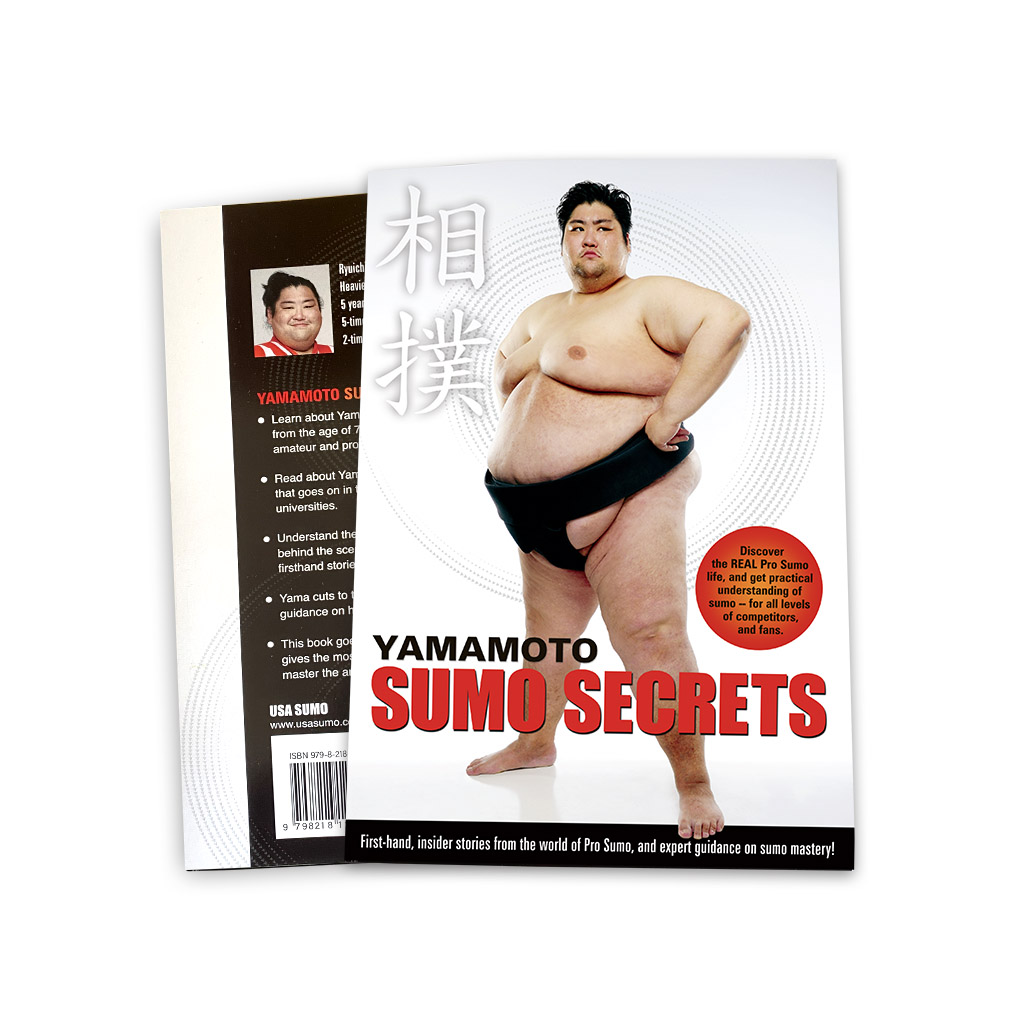In sumo, discipline and athleticism are much more important than sheer size! Elite sumo wrestlers are some of the most fit athletes you will find, anywhere. Most top sumo wrestlers train for hours, almost every day, year-round. Here’s an overview of sumo training.
KEY GOALS
FLEXIBILITY
The best sumo wrestlers are limber, enabling them to adapt to opponents’ movements. Suppleness also protects from injuries.
BALANCE
The essence of sumo competition is maintaining balance, and shifting weight, while under pressure.
STRENGTH
A key focus is to build up tremendous pushing/thrusting strength, which comes from developing complete musculature, throughout the body.
SPEED
The faster you are off the line, the greater your chances of winning. Reaction speed is critical!
STAMINA
Although a single match is short, massive energy is exerted in just a few seconds, so hours of daily training build up endurance, to prepare for competition.
STANCE
Sumo emphasizes a low center of gravity, so all wrestlers work at powerful movements, while knees are bent, and upper body tucked in.
TRAINING EXERCISES
These are some fundamental sumo exercises. Training in all of these will greatly improve your sumo.
Basic Self Training
SHIKO:
20 times x 10 seconds each
For each shiko, slowly raise one leg up, hold it for a second at the highest point, and then slowly let the leg down, and squat. These leg lifts develop all Key Goals above, which is why sumo wrestlers do hundreds of shiko in a row.
MATA-WARI (leg split):
10 seconds
Hold the full leg split position with head on the ground. This cultivates great flexibility and suppleness, and helps to protect against injury.
SURI-ASHI (sliding movement):
20 times (5 yards each time)
Keep the feet on the ground, bend the knees, and keep your elbows tucked in. Sliding the feet and staying connected with the ground are critical throughout the sumo match.
KOSHI-WARI (sumo squat):
20 times x 5 seconds each
With a wide stance, slowly bend the knees and squat down, and then slowly push back up, to stand up. This develops flexibility and strength, training the wrestler to maintain a low stance.
CHIRI-CHOZU (opening ritual):
5 times x 8 seconds each
Do this to improve your balance in the squatting position, and also to master the pre-bout ceremony.
Team Training
MAKI-KAESHI: Practice sliding your outside arm through your opponent’s guard, for an inside grip.
SASU: Practice initiating that inside position, to weaken the opponent’s attack.
NAGE-AI: Practice throwing your opponent, shifting to the side, developing perfect timing.
BUTSUKARI-AI: One partner receives a hit, while the other practices smashing forward, and sliding the opponent backwards.
OTTSUKE: Practice a joint lock on the opponent’s arm, to neutralize his attack.
KAINA O KAESU: Slide your elbow below your opponent’s under-arm, and bend your forearm horizontally across his upper back, effectively neutralizing your opponent’s use of one arm.
